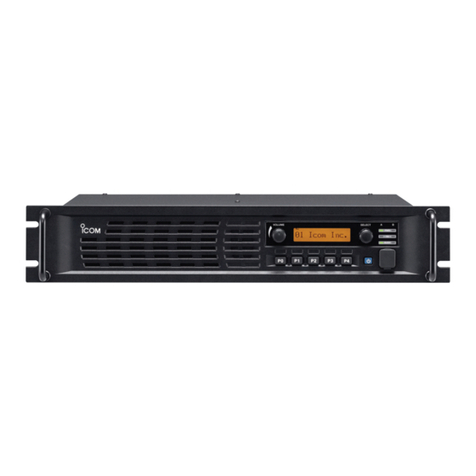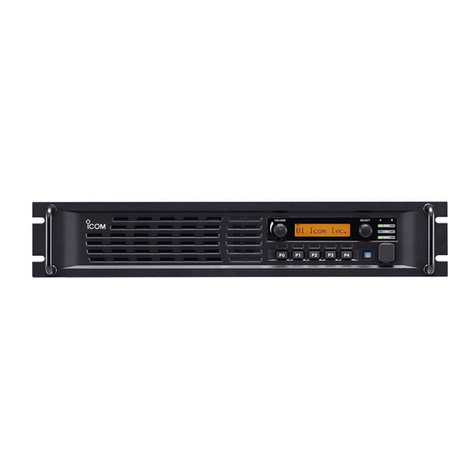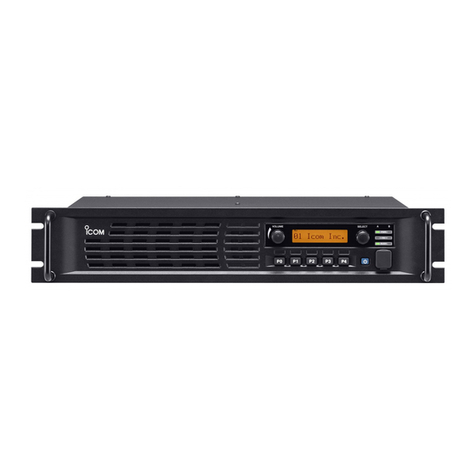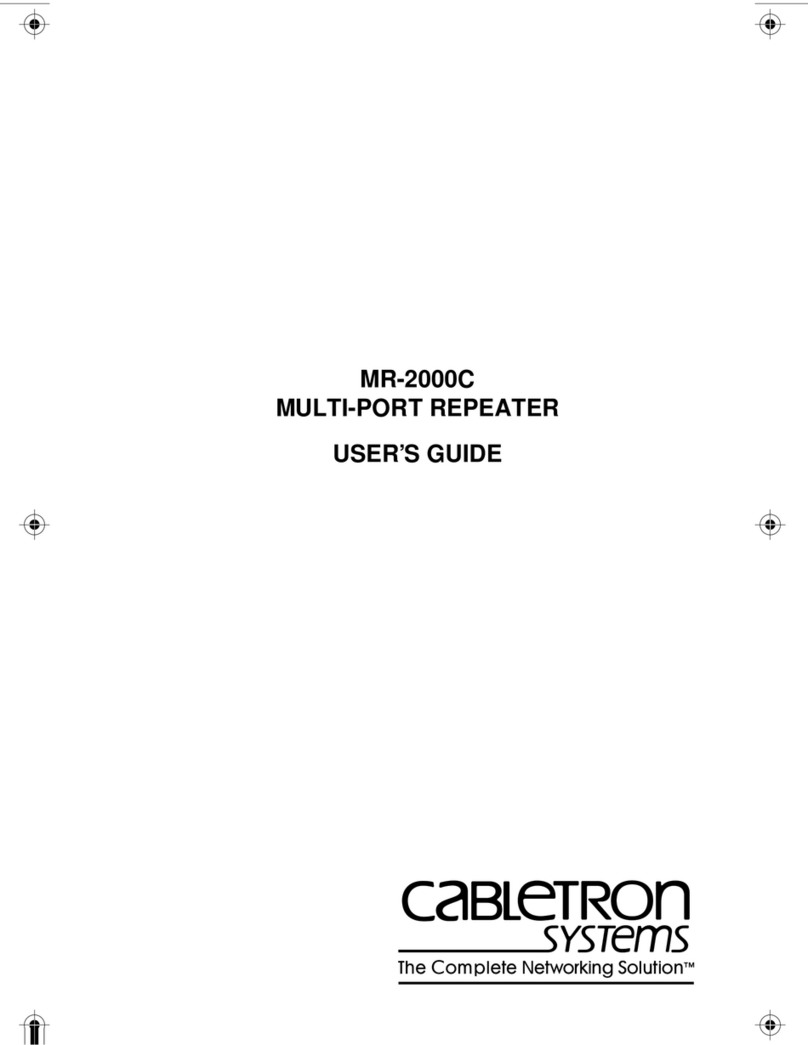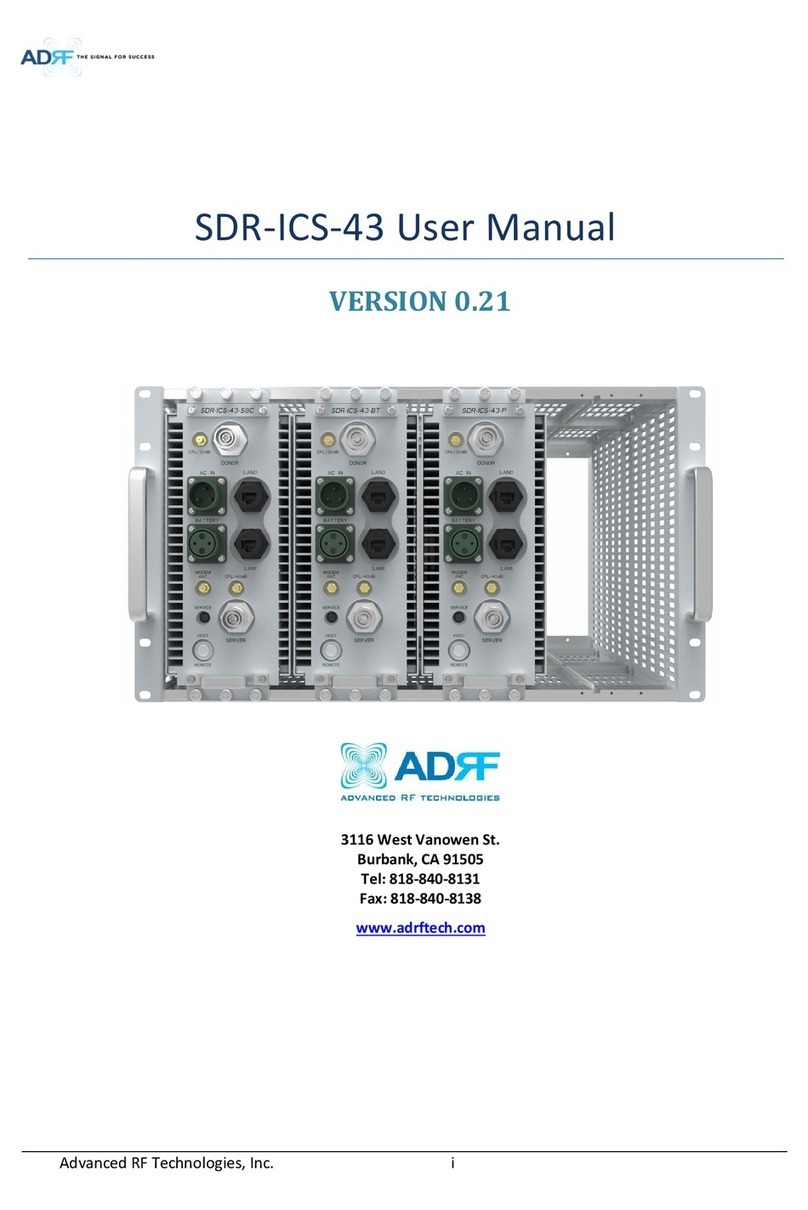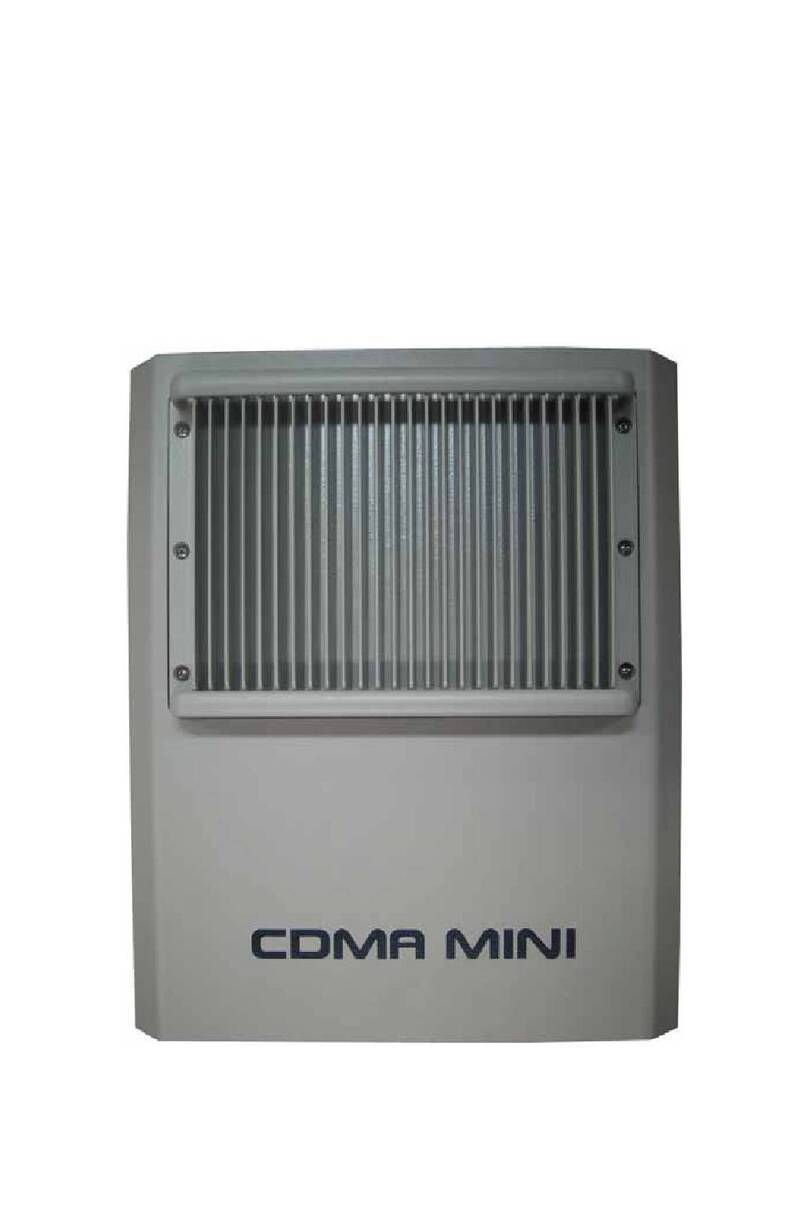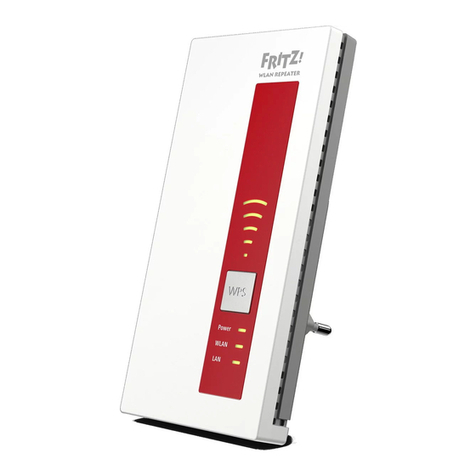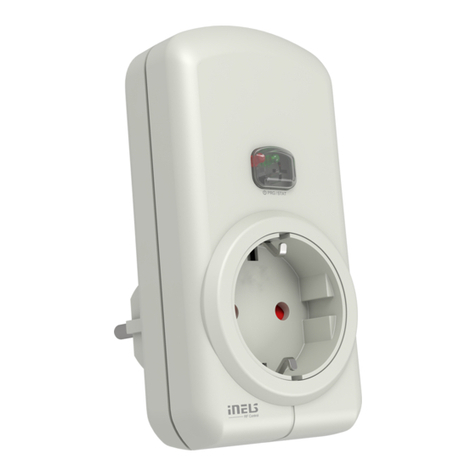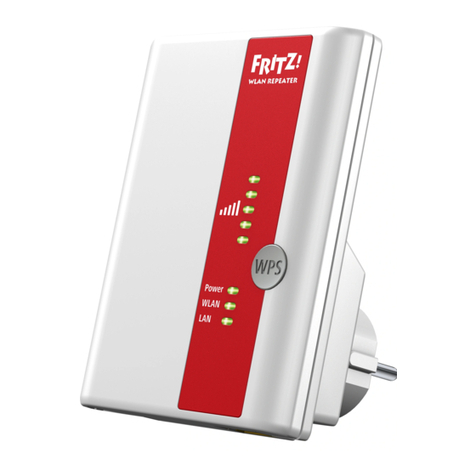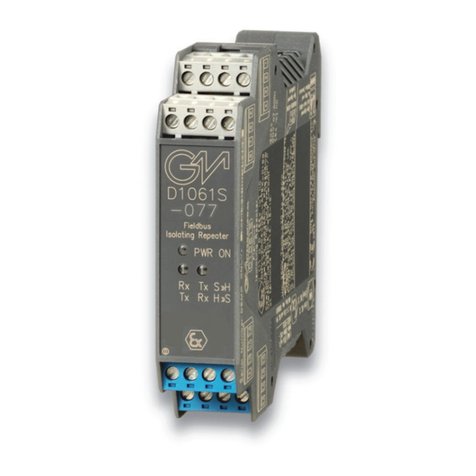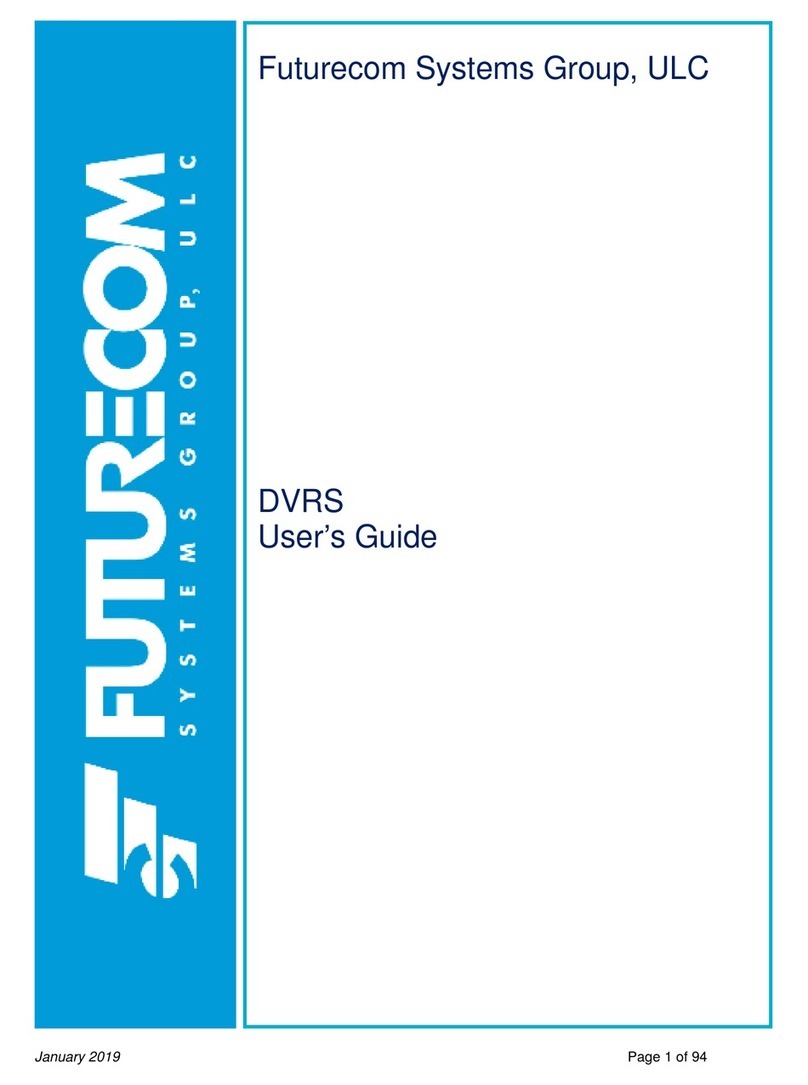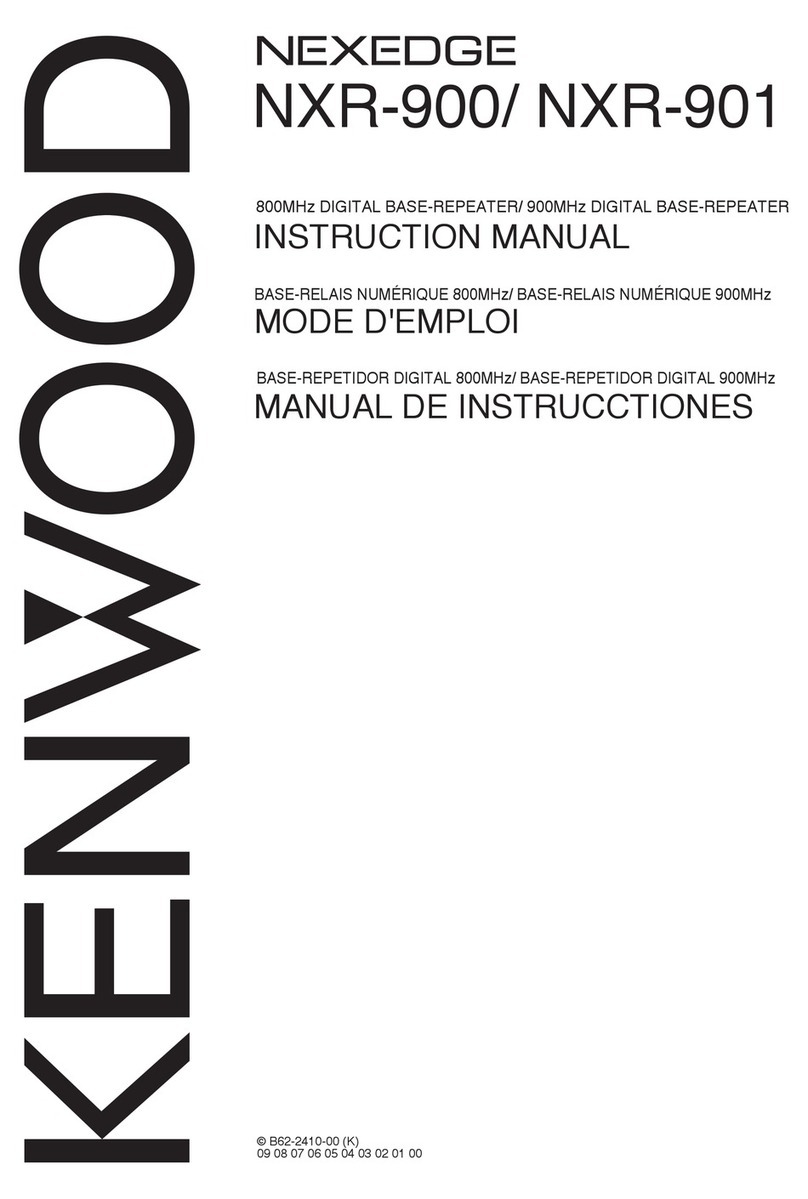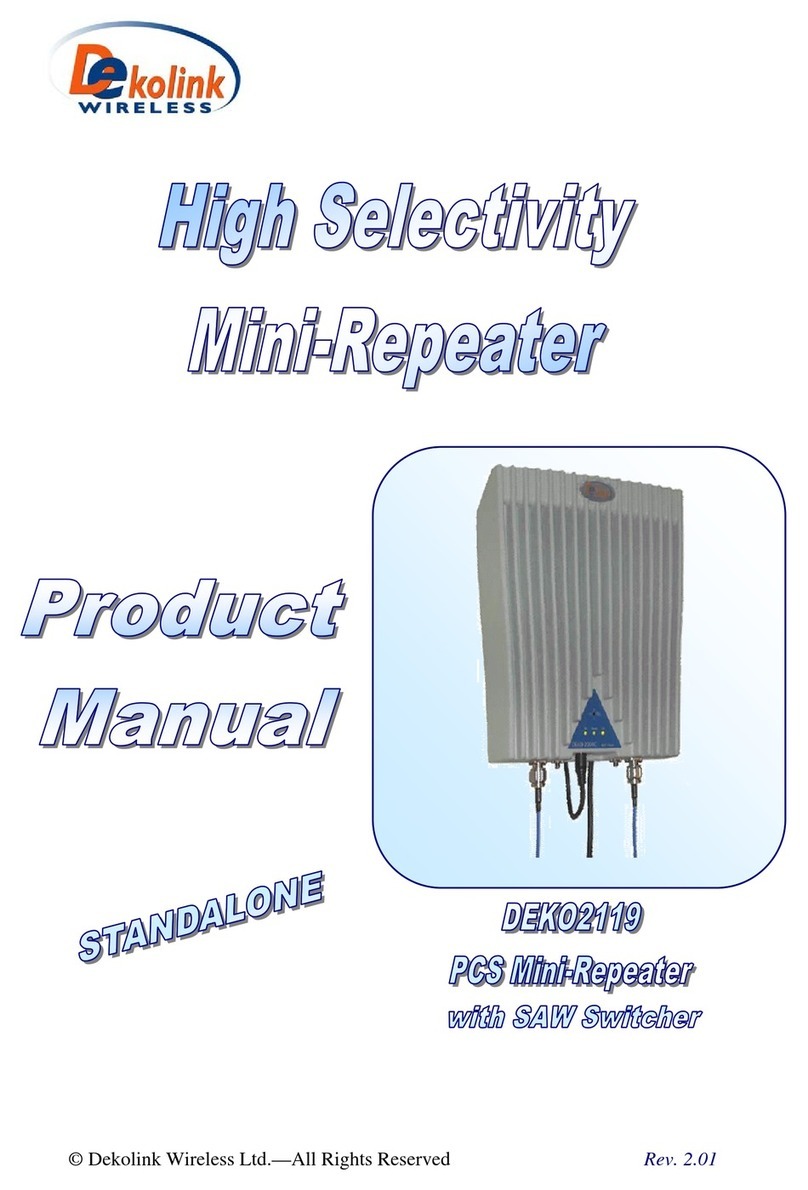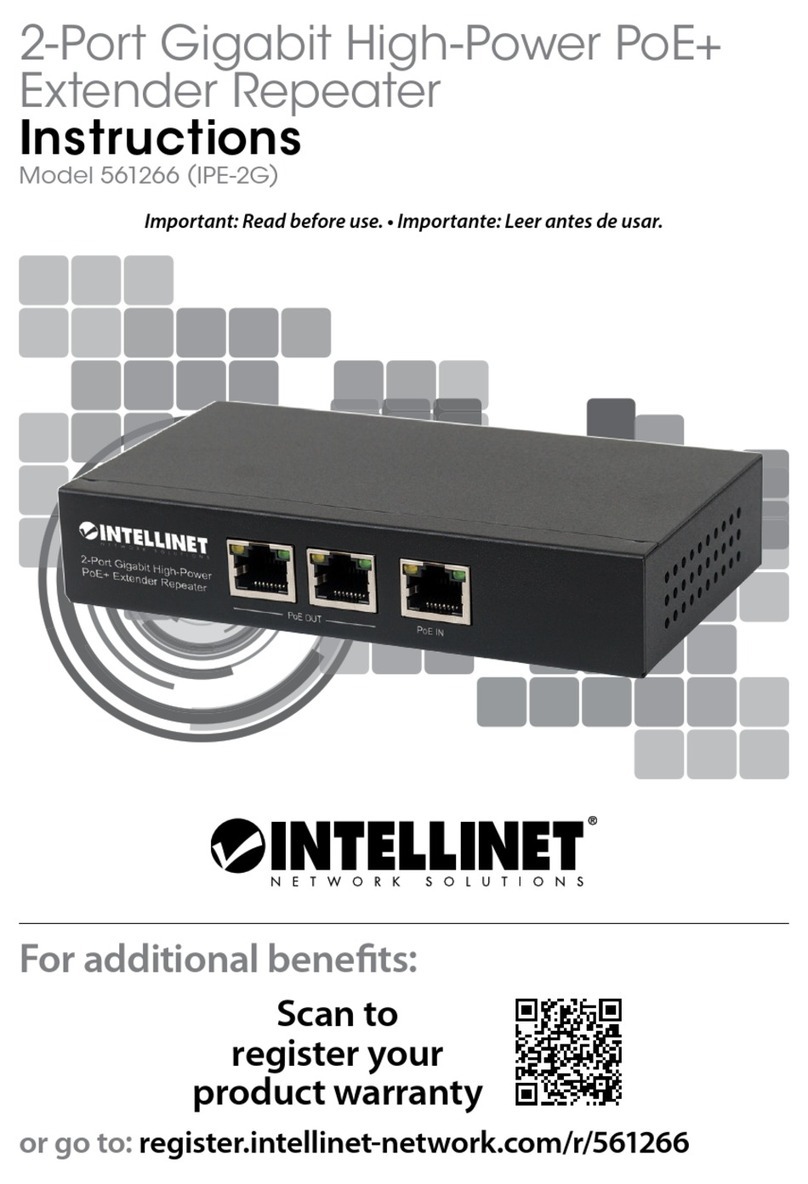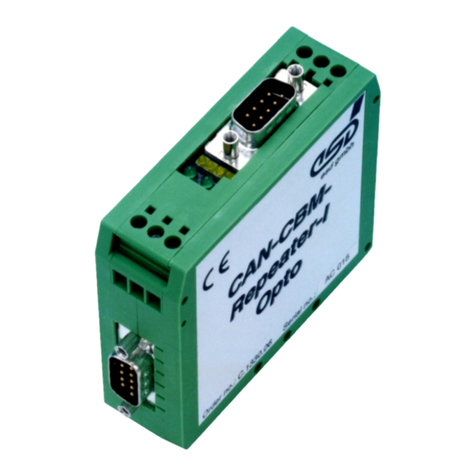Icom IC-FR6000-L User manual

INSTRUCTION MANUAL
VHF FM REPEATER
iFR5000
UHF FM REPEATER
iFR6000
iFR6000-L

i
IMPORTANT
READ THIS INSTRUCTION MANUAL
CAREFULLY before attempting to operate the re-
peater.
SAVE THIS INSTRUCTION MANUAL– This
manual contains important safety and operating in-
structions for the IC-FR5000/IC-FR6000/IC-FR6000-L
vhf/uhf fm repeaters.
EXPLICIT DEFINITIONS
WORD DEFINITION
RWARNING! Personal injury, fire hazard or electric
shock may occur.
CAUTION Equipment damage may occur.
NOTE
If disregarded, inconvenience only. No risk
of personal injury, fire or electric shock.
SUPPLIED ACCESSORIES
The following accessories are supplied.
Handles For handles attachment
Spacers
Screws
DC power cable
(OPC-1784)
DC power cable
(CAB-1149)*2
Function name stickers*1
KEY SEAL
Not supplied, depending on
the repeater version.
*2
Used for labelling the program-
mable function keys according
to their assinged functions.
*1
Icom, Icom Inc. and the Icom logo are registered trademarks
of Icom Incorporated (Japan) in Japan, the United States, the
United Kingdom, Germany, France, Spain, Russia, Australia,
New Zealand, and/or other countries.
All other products or brands are registered trademarks or
trademarks of their respective holders.
Thank you for choosing this Icom product.
This product is designed and built with Icom’ s state
of the art technology and craftsmanship. With proper
care, this product should provide you with years of
trouble-free operation.
DFEATURES
mUp to 2 channels of operation
You can install a channel extension module (op-
tional UR-FR5000/UR-FR6000) into a repeater. 2
channels can be operated on the same repeater
when a channel extension module is installed.
mBuilt-in 5-Tone, DTMF encoder & decoder
Multiple signaling systems are built-in as standard.
These systems are fully compatible with Icom F-
series radios.
mDTMF remote control capability
You can control the repeater from a remote location
over the air or over a phone line with DTMF.
mD-Sub 25 pin ACC port equipped
You can use optional equipment through the D-sub
25 pin ACC port on the repeater’s rear panel.
mOnline control and Digital Trunking opera-
tion
Online control and digital trunking operation are
available when the optional UC-FR5000 trunking/
network controller is installed in the repeater.
mOther features
-
Wide frequency coverage
<VHF>
IC-FR5000 : 136 to 174 MHz
<UHF>
IC-FR6000/IC-FR6000-L
: 350 to 400 MHz,
400 to 470 MHz,
450 to 512 MHz,
450 to 520 MHz
- PC programmable
- 19 inch rack mount
- Optional Voice Scrambler Unit (UT-109R/
UT-110R) for base operating mode
Icom is not responsible for the destruction or damage
to the Icom transceiver, if the malfunction is because
of:
• Force majeure, including, but not limited to, res,
earthquakes, storms, floods, lightning, other natu-
ral disasters, disturbances, riots, war, or radioactive
contamination.
• The use of Icom transceivers with any equipment
that is not manufactured or approved by Icom.

ii
RWARNING HIGH VOLTAGE! NEVER touch an an-
tenna or internal antenna connector while transmitting.
This could cause an electrical shock or RF burn.
RWARNING HIGH VOLTAGE! NEVER install the an-
tenna at any place that person easily touch the an-
tenna while transmitting.This could cause an electrical
shock or RF burn.
RWARNING! NEVER apply AC power to the DC
power receptacle on the repeater rear panel. This
could cause a fire or damage the repeater.
RWARNING! NEVER apply more than 16 V DC to
the DC power receptacle on the repeater rear panel.
This could cause a fire or damage the repeater.
RWARNING! NEVER reverse the DC power cable
polarity. This could cause a fire or damage the re-
peater.
RWARNING! NEVER let metal, wire or other objects
contact the inside of the repeater, or make incorrect
contact with connectors on the rear panel. This could
cause an electric shock or damage the repeater.
CAUTION: DO NOT place or leave the repeater in
areas with temperatures below –30°C (–22°F) or above
+60°C (+140°F). Be aware that temperatures can ex-
ceed 80°C (+176°F), resulting in permanent damage
to the repeater if left there for extended periods.
CAUTION: DO NOT place or leave the repeater in ex-
cessively dusty environments. This could damage the
transceiver.
CAUTION: DO NOT put anything on top of the re-
peater. This will obstruct heat dissipation.
CAUTION: DO NOT set the repeater’s RF output
power to more than your external linear amplifier’s
maximum input level, if you use one. Otherwise, a high
input could damage the linear amplifier.
CAUTION: DO NOT use non-Icom microphones. Other
manufacturer’s microphones may have different pin
assignments, and could damage the connector and/
or the transceiver.
BE CAREFUL! The heatsink will become hot when
continuously operating the repeater for long periods
of time.
NEVER expose the repeater to rain, snow or any liq-
uids.
NEVER leave the transceiver in an insecure place to
avoid use by unauthorized persons.
For U.S.A. only
CAUTION: Changes or modifications to this repeater,
not expressly approved by Icom Inc., could void your
authority to operate this repeater under FCC regula-
tions.
PRECAUTIONS TABLE OF CONTENTS
IMPORTANT............................................................... i
EXPLICIT DEFINITIONS............................................ i
SUPPLIED ACCESSORIES....................................... i
PRECAUTIONS......................................................... ii
SAFETY TRAINING INFORMATION ....................... iii
1 PANEL DESCRIPTION ............................. 1–3
nFront panel ........................................................ 1
D Function display ............................................ 2
nRear panel......................................................... 2
D Accessory connector .................................... 3
2 INSTALLATION AND CONNECTIONS .... 4–6
nUnpacking ......................................................... 4
nSelecting a location........................................... 4
nAntenna connection .......................................... 4
nFront panel connection...................................... 5
nRear panel connection ...................................... 5
nPower supply connection .................................. 6
nMounting the repeater....................................... 6
D Using the supplied handles........................... 6
nFuse replacement ............................................. 6
D Line fuse replacement................................... 6
3 OPERATION ................................................. 7
nReceiving and transmitting................................ 7
D Repeater operation ....................................... 7
D Base station operation .................................. 7
4 MAINTENANCE............................................ 8
nTroubleshooting ................................................. 8
5 OPTIONS ...................................................... 9
6 INFORMATION ........................................... 10
1
2
3
4
5
6
7
8
9
10
11
12
13
14
15
16
17
18
19
20
21

iii
SAFETY TRAINING INFORMATION
WARNING
Your Icom radio generates RF electro-
magnetic energy during transmit mode.
This radio is designed for and classi-
fied as “Occupational Use Only,” mean-
ing it must be used only during the
course of employment by individuals
aware of the hazards, and the ways to
minimize such hazards.
This radio is NOT intended for use by
the “General Population” in an uncon-
trolled environment.
• For compliance with FCC and IC RF Exposure Re-
quirements, the transmitter antenna installation shall
comply with the following three conditions:
1. The transmitter antenna gain shall not exceed 0
dBi.
2. IC-FR5000:
Transmit only when people are at least the rec-
ommended minimum distance of 141 centimeters
away from the properly installed antenna. This
separation distance will ensure that there is suf-
ficient distance from a properly installed external-
ly-mounted antenna to satisfy the RF exposure
requirements in the applicable RF exposure com-
pliance standards.
2. IC-FR6000/IC-FR6000-L:
Transmit only when people are at least the rec-
ommended minimum distance of 122 centimeters
away from the properly installed antenna. This
separation distance will ensure that there is suf-
ficient distance from a properly installed external-
ly-mounted antenna to satisfy the RF exposure
requirements in the applicable RF exposure com-
pliance standards.
CAUTION
To ensure that your exposure to RF
electromagnetic energy is within the
FCC and IC allowable limits for occu-
pational use, always adhere to the fol-
lowing guidelines:
• DO NOT operate the radio without a proper antenna
attached, as this may damage the radio and may also
cause you to exceed FCC and IC RF exposure limits.
A proper antenna is the antenna supplied with this
radio by the manufacturer or an antenna specifically
authorized by the manufacturer for use with this ra-
dio.
• DO NOT transmit for more than 50% of total radio
use time (“50% duty cycle”). Transmitting more than
50% of the time can cause FCC and IC RF exposure
compliance requirements to be exceeded. The radio
is transmitting when the “TX indicator” lights red.You
can cause the radio to transmit by pressing the “PTT”
switch.
Electromagnetic Interference/Compatibility
During transmissions, your Icom radio generates RF
energy that can possibly cause interference with other
devices or systems.To avoid such interference, turn off
the radio in areas where signs are posted to do so. DO
NOT operate the transmitter in areas that are sensitive
to electromagnetic radiation such as hospitals, aircraft,
and blasting sites.

iv
1
2
3
4
5
6
7
8
9
10
11
12
13
14
15
16
17
18
19
20
21
SAFETY TRAINING INFORMATION
AVERTISSEMENT
Votre radio Icom produit une énergie
électromagnétique de radiofréquen-
ces (RF), en mode de transmission.
Cette radio est conçue pour un
«usage professionnel seulement» et
classée comme tel, ce qui signifie
qu’elle doit être utilisée uniquement
dans le cadre d’un travail par des
personnes conscientes des dangers
et des mesures visant à minimiser
ces dangers. Elle N’EST PAS conçue
pour une «utilisation grand public»,
dans un environnement non
contrôlé.
• An de satisfaire aux exigences de la FCC et d’IC
en matière d’exposition aux RF, il est nécessaire que
l’antenne soit installée conformément aux trois condi-
tions suivantes:
1.
Le gain de l’antenne du radio émetteur ne doit pas
dépasser 0 dBi.
2. IC-FR5000:
Transmettre que lorsque les gens sont au moins
la distance minimale recommandée de 141 cen-
timètres de l'antenne est correctement installé.
Cette distance de sécurité assurera que les per-
sonnes soient placées suffisamment loin d’une
antenne correctement fixée à l’extérieur pour sat-
isfaire aux exigences en matière d’exposition aux
RF, en vertu des normes de conformité applica-
bles.
2. IC-FR6000/IC-FR6000-L:
Transmettre que lorsque les gens sont au moins
la distance minimale recommandée de 122 cen-
timètres de l'antenne est correctement installé.
Cette distance de sécurité assurera que les per-
sonnes soient placées suffisamment loin d’une
antenne correctement fixée à l’extérieur pour satis-
faire aux exigences en matière d’exposition aux RF,
en vertu des normes de conformité applicables.
MISE EN GARDE
Afin de vous assurer que votre expo-
sition à une énergie électromagnéti-
que de RF se situe dans les limites
permises par la FCC et d’IC pour une
utilisation grand public, veuillez en
tout temps respecter les directives
suivantes:
• NE PAS faire fonctionner la radio sans qu’une
antenne appropriée y soit fixée, car ceci risque
d’endommager la radio et causer une exposition
supérieure aux limites établies par la FCC et d’IC.
L’antenne appropriée est celle qui est fournie avec
cette radio par le fabricant ou une antenne spécia-
lement autorisée par le fabricant pour être utilisée
avec cette radio.
• NE PAS émettre pendant plus de 50% du temps
total d’utilisation de l’appareil («50% du facteur
d’utilisation»). Émettre pendant plus de 50% du
temps total d’utilisation peut causer une exposition
aux RF supérieure aux limites établies par la FCC
et d’IC. Lorsque le voyant DEL rouge s’allume,
cette radio est en train d’émettre. La radio émettra
si vous appuyez sur le bouton du microphone.
Interférence électromagnétique et compatibilité
En mode de transmission, votre radio Icom produit de
l’énergie de RF qui peut provoquer des interférences
avec d’autres appareils ou systèmes. Pour éviter de
telles interférences, mettez la radio hors tension dans
les secteurs où une signalisation l’exige. NE PAS faire
fonctionner l’émetteur dans des secteurs sensibles au
rayonnement électromagnétique tels que les hôpitaux,
les aéronefs et les sites de dynamitage.

1
1
PANEL DESCRIPTION
qINTERNAL SPEAKER
Outputs the received audio.
wVOLUME CONTROL [VOLUME] (p. 7)
Adjusts the audio output level.
eSELECTOR DIAL [SELECT]
Rotate to adjust the squelch threshold level, select
the operating channel. (Depending on the preset-
ting.)
rPOWER INDICATOR [POWER]
➥Lights green at ‘A’ module's indicator while the
repeater power is turned ON.
When a channel extension module is installed:
➥Lights green at the selected module indicator
(‘A’ or ‘B’) while the repeater power is turned
ON.
➥Lights orange at the un-selected module indica-
tor (‘A’ or ‘B’) while the repeater power is turned
ON.
tTRANSMIT INDICATOR [TX]
Lights red while transmitting.
yBUSY INDICATOR [BUSY]
Lights green while receiving a signal or when the
noise squelch is open.
About [PWR], [TX] and [BUSY] indicators:
‘A’ and ‘B’ modules indicators are usable for these
indications. ‘A’ module's indicator corresponds to
the original module, and ‘B’ module's indicator cor-
responds to an extended module.
u
MICROPHONE CONNECTOR [MIC]
This 8-pin modular jack accepts an optional micro-
phone.
KEEP the [MIC] connector cover attached to the
repeater when an optional microphone is not
used.
qi
q+8 V DC output (Max. 15 mA)
wOutput port for PC programming
eNC
rM PTT (Input port for TX control)
tMicrophone ground
yMicrophone input
uGround
iInput port for PC programming
iPOWER SWITCH [POWER]
➥Push to turn ON the repeater power.
➥Hold down for 3 seconds to turn OFF the re-
peater power.
When a channel extension module is installed:
➥While the repeater power is turned ON, push
to select the desired module to operate the re-
peater as the base station.
• The power indicator of the selected module unit
lights green.
oDEALER-PROGRAMMABLE KEYS
Desired functions can be independently preset by
your dealer.
Ask your dealer for details.
• Because these keys are programmable, the functions
are unique to each unit.
P
0
P
1
P
2
P
3
P
4
qw e
i uo
Function
display
y
t
r
nFront panel
(Front panel view)

2
1
PANEL DESCRIPTION
qDC POWER CONNECTOR (For cooling fans)
Connects to the supplied CAB-1149 DC power
cable from this connector to an external 13.6 V DC
power source to activate the cooling fans. (Depend-
ing on the repeater version)
See page 5 for the connection details.
w
EXTERNAL SPEAKER CONNECTOR [SP]
Connects to the optional SP-35.
eRECEIVE ANTENNA CONNECTOR [RX]
Connects to a receive antenna (impedance: 50 ø).
rACCESSORY CONNECTOR [ACC]
Connects to the accessory connector.
• See p. 3 for accessory connector information.
tDC POWER RECEPTACLE
Connects to the supplied OPC-1784 DC power
cable from an external 13.6 V DC power source.
See page 5 for the connection details.
yTRANSMIT ANTENNA CONNECTOR [TX]
Connects to a transmit antenna (impedance: 50 ø).
we ryt
The optional channel extention module
can be installed.
Ask your dealer for details.
The optional trunking/network controller
can be installed.
Ask your dealer for details.
q
q SIGNAL STRENGTH INDICATOR
Indicates relative signal strength level.
w LOW POWER INDICATOR
Appears when low output power is selected.
e AUDIBLE INDICATOR
Appears when the channel is in the ‘audible’ (un-
mute) mode.
r COMPANDER INDICATOR
Appears when the compander function is activated.
t SCRAMBLER/ENCRYPTION INDICATOR
Appears when the voice scrambler/encryption
function is activated.
y ALPHANUMERIC DISPLAY
Shows a variety of text or code information.
nRear panel
DFunction display
ICOM Inc.
qwert
y
1
2
3
4
5
6
7
8
9
10
11
12
13
14
15
16
17
18
19
20
21
The repeater rear panel may be different, depending on the repeater’s version.

3
1PANEL DESCRIPTION
DAccessory connector
q!3
!4 @5
SpecificationDescriptionPin NamePin No.
NC
TXD
RXD
RTS
CTS
NC
GND
MOD IN
DISC OUT
EXT. D/A
VCC
EXT. A/D
NC
GND
EXT.I/O 15
EXT.I/O 16
EXT.I/O 17
EXT.I/O 18
EXT.I/O 19
DATA IN
EXT.I/O 21
AF OUT
EXT.I/O 23
EXT.I/O 24
EXT.I/O 25
1
2
3
4
5
6
7
8
9
10
11
12
13
14
15
16
17
18
19
20
21
22
23
24
25
No connection
Output terminal for serial communication data.
Input terminal for serial communication data.
Output terminal for request-to-send data.
Input terminal for clear-to-send data.
No connection
Serial/digital signal ground
Modulator input from an external terminal unit.
Output terminal for AF signals from the AF detector circuit.
Output level is fixed, regardless of the [AF] control setting.
The desired function can be assigned.*
(Default: Null)
13.6 V DC output
Customize A/D input (Not used)
No connection
Ground
The desired function can be assigned.*
(Default: Null)
The desired function can be assigned.*
(Default: P0 Monitor Output)
The desired function can be assigned.*
(Default: Busy Output)
The desired function can be assigned.*
(Default: Null)
The desired function can be assigned.*
(Default: EPTT Input)
Input terminal for data.
The desired function can be assigned.*
(Default: Analog Audible Output)
The AF detector Output.
The desired function can be assigned.*
(Default: Mic Mute Output)
The desired function can be assigned.*
(Default: Null)
The desired function can be assigned.*
(Default: Mic Hanger Output)
—
—
—
—
—
—
—
Input level: 300 mV rms
Output level: 300 mV rms
—
Output current: Less than 1 A
—
—
—
+5 V pull up, Active=L
+5 V pull up, Active=L
+5 V pull up, Active=L
+5 V pull up, Active=L
+5 V pull up, Active=L
—
+5 V pull up, Active=L
—
+5 V pull up, Active=L
+5 V pull up, Active=L
+5 V pull up, Active=L
* The desired function can be assigned using the optional CS-FR5000 cloning software. Ask your dealer for details.

2
4
INSTALLATION AND CONNECTIONS
nUnpacking
After unpacking, immediately report any damage to
the delivering carrier or dealer. Keep the shipping car-
tons.
For a description and a diagram of accessory equip-
ment included with the repeater, see ‘SUPPLIED AC-
CESSORIES’ on page i of this manual.
nSelecting a location
Select a location for the repeater that allows adequate
air circulation, free from extreme heat, cold, or vibra-
tions, and away from TV sets, TV antenna elements,
radios and other electromagnetic sources.
nAntenna connection
For radio communications, the antenna is a critical
component, along with output power and sensitivity.
Select antenna(s), such as a well-matched 50 øan-
tenna, and feedline. 1.5:1 or better of Voltage Stand-
ing Wave Ratio (VSWR) is recommended for the de-
sired band. Of course, the transmission line should be
a coaxial cable.
CAUTION: DO NOT install the repeater without a
lightning arrestor to help protect the repeater from
lightning.
NOTE: There are many publications that describe
proper antennas and their installation. Check with
your local dealer for more information and recom-
mendations.
TYPE-N CONNECTOR INSTALLATION EXAMPLE
15 mm (0.59 in) 6 mm (0.24 in) 3 mm (0.12 in)
Slide the nut, flat washer, rubber gasket and clamp over the coaxial
cable, then cut the end of the cable evenly.
Strip the cable and fold the braid back over the clamp.
Soft solder the center conductor. Install the center conductor pin and
solder it.
Carefully slide the plug body into place aligning the center conductor
pin on the cable. Tighten the nut onto the plug body.
q
w
e
r
15 mm
3 mm 6 mm
No space
Solder hole
Be sure the center conductor is
the same height as the plug body.
Clamp Center
conductor
Washer
Nut Rubber gasket
1
2
3
4
5
6
7
8
9
10
11
12
13
14
15
16
17
18
19
20
21

nFront panel connection
P0P1P2P3P4
SM-26 DESKTOP
MICROPHONE
(optional)
MICROPHONE CONNECTOR (Front panel view)
HM-152 HAND
MICROPHONE
(optional)
qi
CAUTION: DO NOT short pin 1 to ground as this can
damage the internal 8 V regulator. DC voltage is applied
to pin 1 for microphone operation. Only Icom micro-
phones are recommended.
q+8 V DC output (Max. 15 mA)
wOutput port for PC programming
eNC
rM PTT (Input port for TX control)
tMicrophone ground
yMicrophone input
uGround
iInput port for PC programming
nRear panel connection
ACC CONNECTOR (p. 3)
Used for external equipment
control.
[RX ANT]
(p. 4)
[TX ANT] (p. 4)
EXTERNAL SPEAKER
RWARNING!
NEVER remove the
fuse-holder from the
DC power recepta-
cle or cable.
4 øexternal speaker.
Black
Red
Blac
k
Red
20 A
fuses
DC power supplyAC outlet
AC cable
Supplied
DC power cable (OPC-1784)
13.6 V; at least 20 A
Black
_
Red
+
qPush
w
RWhen you disconnect the
DC power cable, take care to
not crack of your fingernail.
Supplied
DC power
cable (CAB-1149)*
1 A
fuses
To a 13.6 V
DC power source
*This connection may not be required, depending on the repeater version.
The repeater rear panel may be different, depending on the repeater version.
5
2INSTALLATION AND CONNECTIONS

6
2
INSTALLATION AND CONNECTIONS
nPower supply connection
Make sure the repeater’s power is turned OFF when
connecting a DC power cable.
RWARNING! NEVER apply more than 16 V DC to
the DC power receptacle on the repeater rear panel.
This could cause a fire or damage the repeater.
nMounting the repeater
DUsing the supplied handles
The supplied handles are used when mounting the re-
peater into a 19 inch rack. The handles are installed on
the repeater’s front panel.
qAttach the supplied handles to both sides of the re-
peater’s front panel with the spacers, then tighten
the screws as shown below.
P
0
P
1
P
2
P
3
P
4
Handle
Spacer
Screw
wThe completed installation should look like the illus-
tration below.
P
0
P
1
P
2
P
3
P
4
1
2
3
4
5
6
7
8
9
10
11
12
13
14
15
16
17
18
19
20
21
nFuse replacement
If a fuse blows, or the repeater stops functioning, find
the source of the problem, repair it and then replace
the damaged fuse with a new rated one.
CAUTION: DO NOT replace the fuse with the DC
power cable connected to the repeater. Disconnect
the cable to prevent electric shock and/or equip-
ment damage.
DLine fuse replacement
Fuse rating: 20 A
USE only a 20 A fuse.
Fuse rating: 1 A
USE only a 1 A fuse.

nReceiving and transmitting
DRepeater operation
Ask your dealer for details of the repeater’s preset-
tings.
➥ When the power is turned ON, the [PWR] indicator
lights green. (p. 1)
➥ The [TX] or [BUSY] indicator lights simultaneously
while transmitting/receiving a signal.
• The [TX] indicator lights red.
• The [BUSY] indicator lights green.
NOTE: A power amplifier protector is built into the
repeater. The protector is activated when the re-
peater temperature becomes extremely high due to
long periods of transmitting to reduce the transmit
output power level. The output power will return to
its normal level when the repeater has cooled
down.
DBase station operation
Receiving
qPush [POWER] to turn ON the power.
wSet the audio and squelch levels.
➥Rotate [SELECT]*1fully counterclockwise in ad-
vance.
➥Rotate [VOLUME] to adjust the audio output
level.
➥Rotate [SELECT]*1clockwise until the noise just
disappears.
ePush [CH Up]*2or [CH Down]*2to select the de-
sired channel.
• When receiving a signal, the [BUSY] indicator lights
green and audio is heard from the speaker.
• Further adjustment of [VOLUME] to a comfortable lis-
tening level may be necessary at this point.
*1When the [SQL Level Up/Down] key function is assigned
to [SELECT].
*2When the [CH Up]/[CH Down] key functions are as-
signed.
Transmitting
qTake the microphone off hook.
wWait for the channel to become clear.
eHold down [PTT] to transmit, then speak into the
microphone at your normal voice level.
rRelease [PTT] to receive.
IMPORTANT:
To maximize the audio quality of the transmitted
signal:
1. Pause briefly after pushing [PTT].
2. Hold the microphone 5 to 10 cm (2 to 4 inch)
from your mouth, then speak at your normal
voice level.
3
7
OPERATION

4
8
MAINTENANCE
nTroubleshooting
The following chart is designed to help you correct
problems that are not equipment malfunctions.
If you are unable to locate the cause of a problem
or solve it through the use of this chart, contact your
nearest Icom Dealer or Service Center.
1
2
3
4
5
6
7
8
9
10
11
12
13
14
15
16
17
18
19
20
21
PROBLEM POSSIBLE CAUSE SOLUTION REF.
Power does not come
on when [POWER] is
pushed.
• DC power cable is improperly connected.
• Fuse is blown.
• Re-connect the DC power cable correctly.
• Find the cause and repair it, then replace the
fuse with a rated one.
pp.
5, 6
p. 8
No sound comes from
the speaker.
• Volume level is too low.
• The squelch is closed.
• The audio mute function is activated.
• A selective call or squelch function is acti-
vated such as 5-tone call or tone squelch.
• The front speaker is set to OFF.
• Rotate [VOLUME] clockwise to obtain a suit-
able listening level.
• While in the base operating mode, rotate
[SELECT] to counterclockwise to open the
squelch. (When the [SQL Level Up/Down] key
function is assigned to [SELECT].)
• Push [MONI] (if assigned) to turn the audio
mute function OFF.
• Turn OFF the appropriate function.
• Turn ON the front speaker using the optional
CS-FR5000 cloning software. Ask your
dealer for details.
p. 7
p. 7
–
–
–
Sensitivity is low and
only strong signals
are audible.
• Antenna feedline or the antenna connec-
tor has a poor contact or is short-circuited.
• Check and reconnect (or replace if neces-
sary), the antenna feedline or antenna con-
nector.
p. 5
Received audio is un-
clear or distorted.
• Optional voice scrambler is turned OFF.
• Scrambler code is not set correctly.
• Turn ON the optional voice scrambler.
• Reset the scrambler code.
–
–
Output power is too
low.
• Output power is set to Low.
• Power amplifier protection circuit is acti-
vated.
• Push [HIGH/LOW] (if assigned) to select
High power.
• Cool down the repeater or stop accessing the
repeater until it has cooled down.
–
–
No contact possible
with another station.
• The other station is using tone squelch.
• The operation mode is set to the Full-du-
plex mode. (Base station operation)
• Turn the tone squelch function ON.
• Set the operation mode to the Simplex mode,
if the other station is in the Simplex mode.
–
–

5
9
OPTIONS
• SP-35 external speaker
Compact and easy-to-install.
Input impedance: 4 ø
Rated input: 5 W
Maximum input: 7 W
• HM-152 hand microphone
• SM-26 desktop microphone
• UR-FR5000/UR-FR6000 channel extension modules
• UC-FR5000 trunking/network controller
• UT-109R voice scrambler unit
Non-rolling type (32 codes maximum).
• UT-110R voice scrambler unit
Rolling type (1020 codes maximum).
NOTE: The scrambler systems of the UT-109R and
UT-110R are not compatible with each other.
Some options may not be available in some countries.
Please ask your dealer for details.

6
10
INFORMATION
1
2
3
4
5
6
7
8
9
10
11
12
13
14
15
16
17
18
19
20
21
• ABOUT VOICE CODING TECHNOLOGY
The AMBE+2™ voice coding Technology embodied in
this product is protected by intellectual property rights
including patent rights, copyrights and trade secrets
of Digital Voice Systems, Inc. This voice coding Tech-
nology is licensed solely for use within this Communi-
cations Equipment.
The user of this Technology is explicitly prohibited
from attempting to extract, remove, decompile, re-
verse engineer, or disassemble the Object Code, or in
any other way convert the Object Code into a human-
readable form. U.S. Patent Nos.
#8,595,002, #8,359,197, #8,315,860, #8,200,497,
#7,970,606, and #6,912,495 B2.
• FOR CLASS B UNINTENTIONAL RADIATORS:
This equipment has been tested and found to comply
with the limits for a Class B digital device, pursuant to
part 15 of the FCC Rules. These limits are designed
to provide reasonable protection against harmful in-
terference in a residential installation. This equipment
generates, uses and can radiate radio frequency en-
ergy and, if not installed and used in accordance with
the instructions, may cause harmful interference to ra-
dio communications. However, there is no guarantee
that interference will not occur in a particular installa-
tion.
If this equipment does cause harmful interference to
radio or television reception, which can be determined
by turning the equipment off and on, the user is en-
couraged to try to correct the interference by one or
more of the following measures:
• Reorient or relocate the receiving antenna.
• Increase the separation between the equipment and
receiver.
• Connect the equipment into an outlet on a circuit dif-
ferent from that to which the receiver is connected.
• Consult the dealer or an experienced radio/TV tech-
nician for help.

1-1-32 Kamiminami, Hirano-ku, Osaka 547-0003, Japan
A6635H-1EX-9a
Printed in Japan
© 2007–2018 Icom Inc.
Printed on recycle paper with soy ink.
This manual suits for next models
2
Table of contents
Other Icom Repeater manuals

Icom
Icom IC-FR6100 User manual
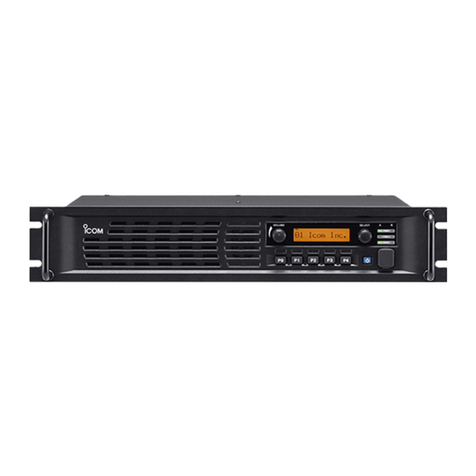
Icom
Icom IC-FR5000 Series User manual

Icom
Icom IC-RP2210 Service manual
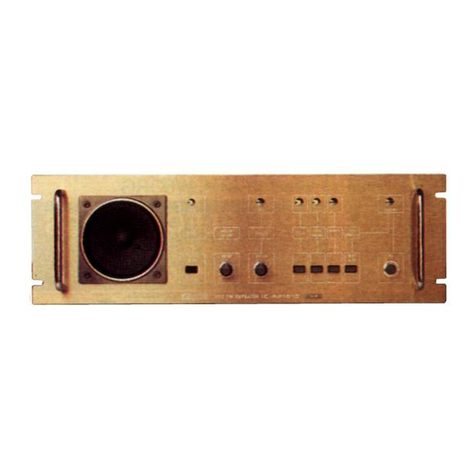
Icom
Icom IC-RP1510 User manual
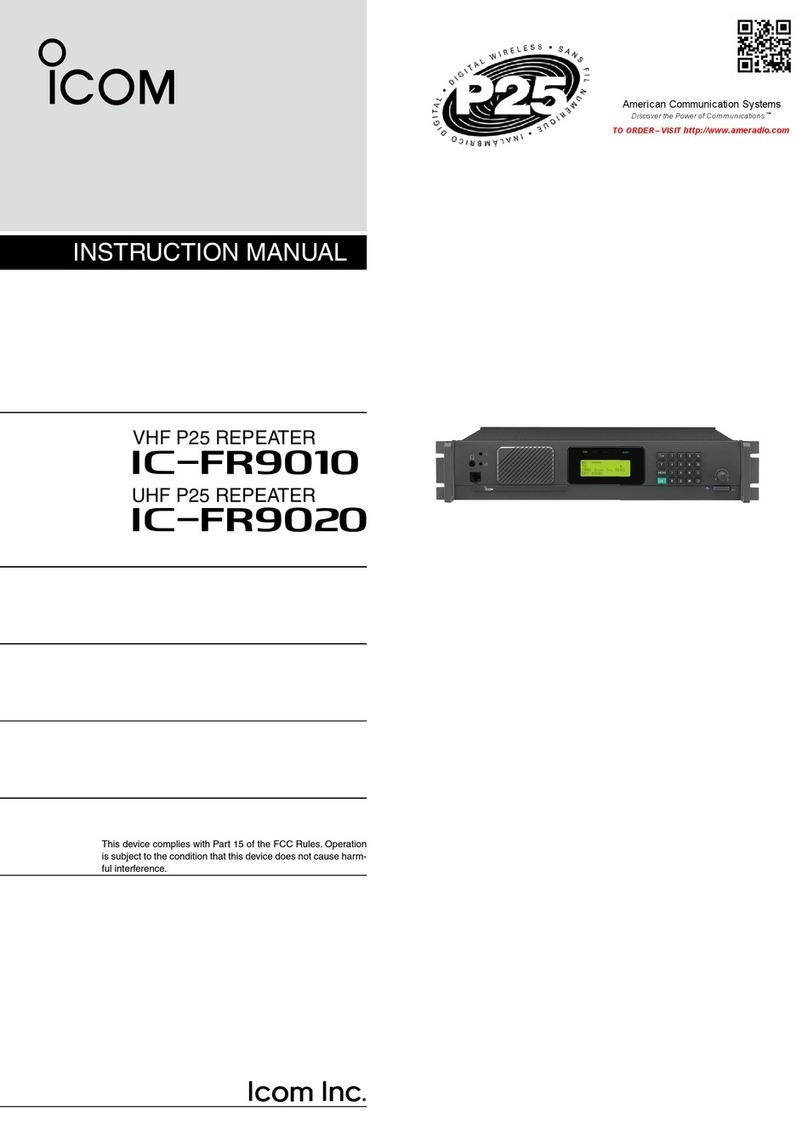
Icom
Icom FR9020 11 User manual

Icom
Icom IC-RP4520 User manual
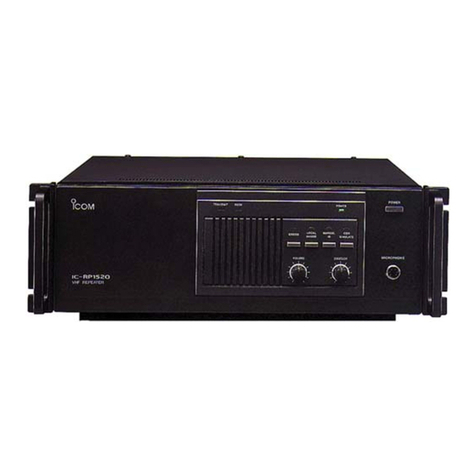
Icom
Icom IC-RP1520 User manual
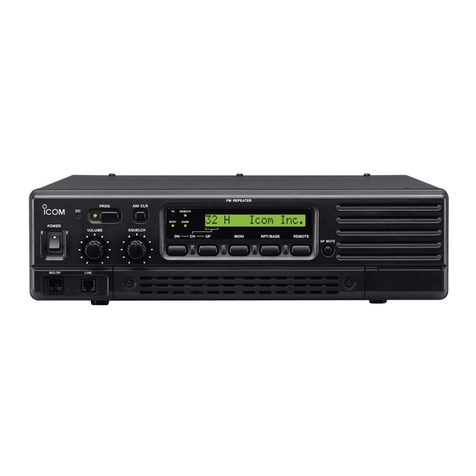
Icom
Icom IC-FR3000 Series User manual
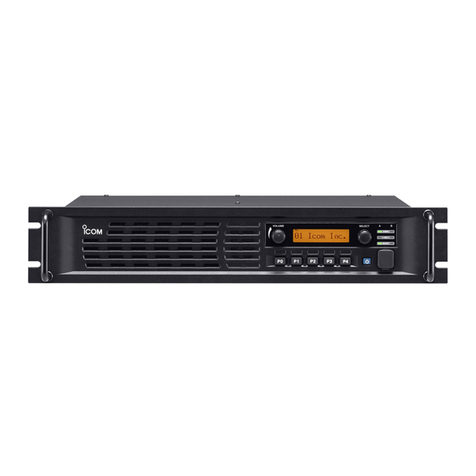
Icom
Icom iC-FR5000 User manual
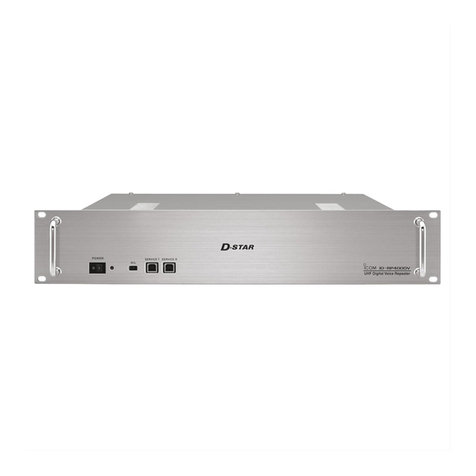
Icom
Icom id- rp4000v User manual
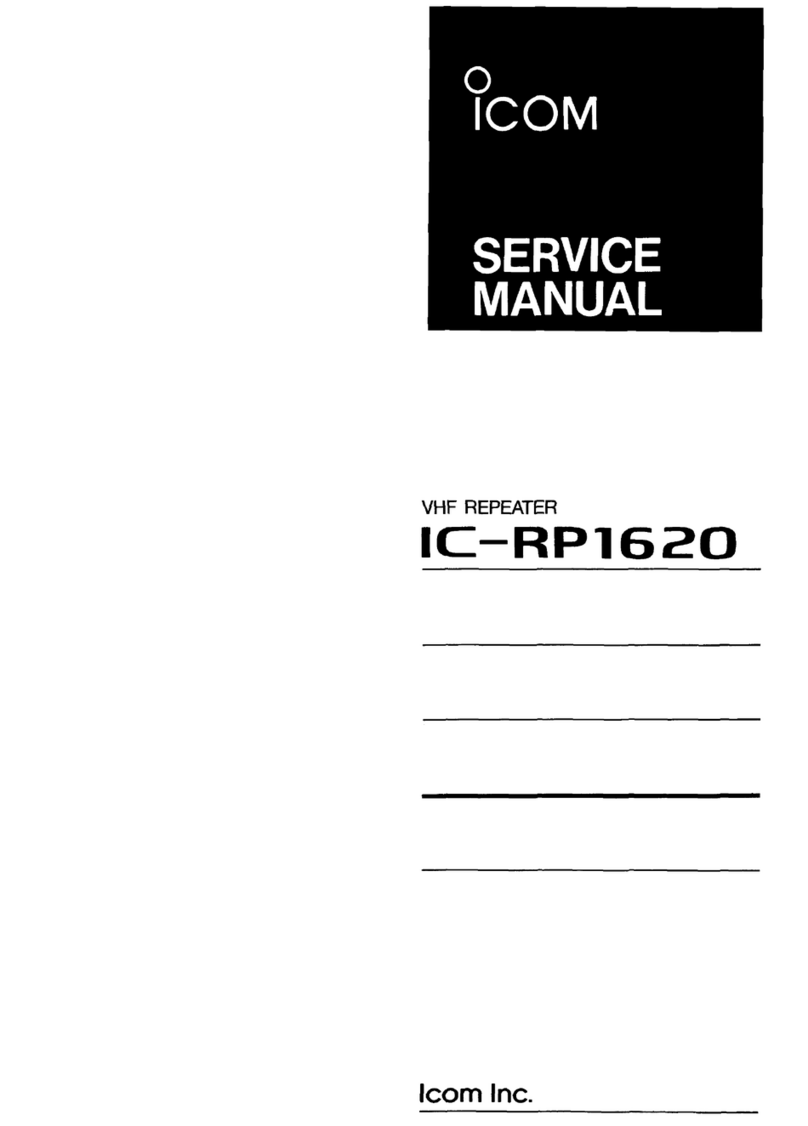
Icom
Icom IC-RP1620 User manual

Icom
Icom IC-FR3000 Series User manual
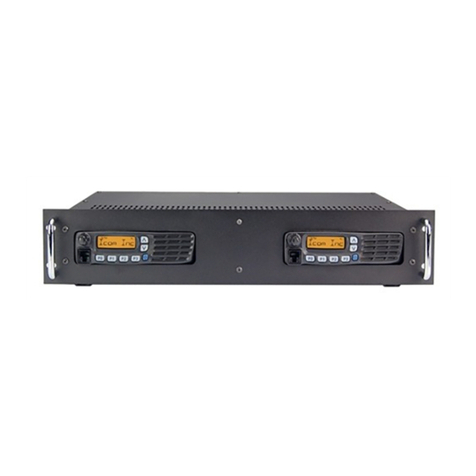
Icom
Icom X BAND 50 User manual

Icom
Icom IC-FR9020 User manual
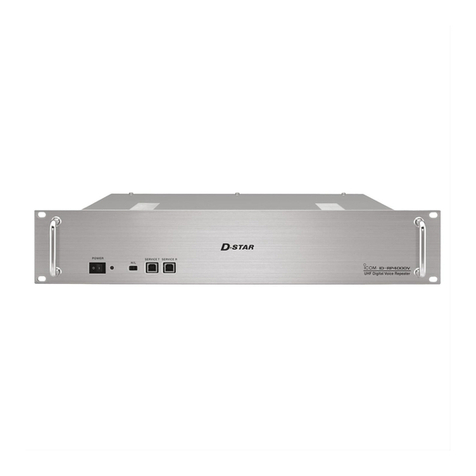
Icom
Icom id- rp2 User manual
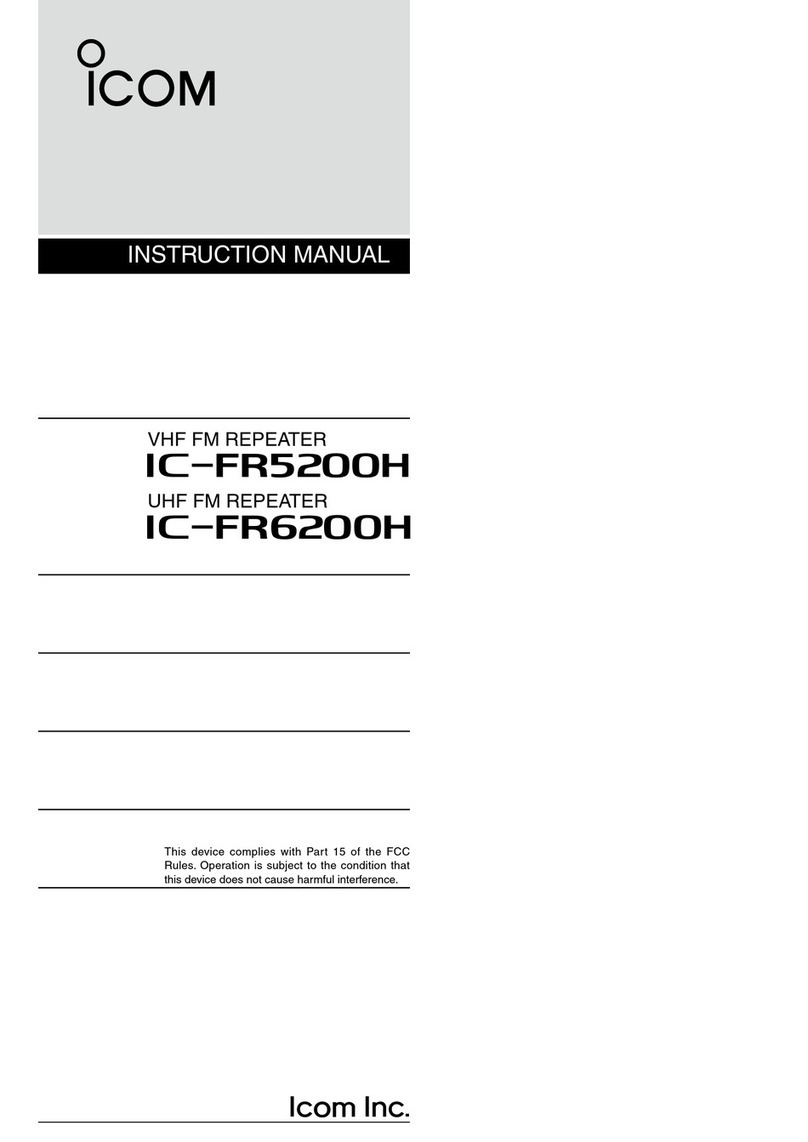
Icom
Icom iFR5200H User manual
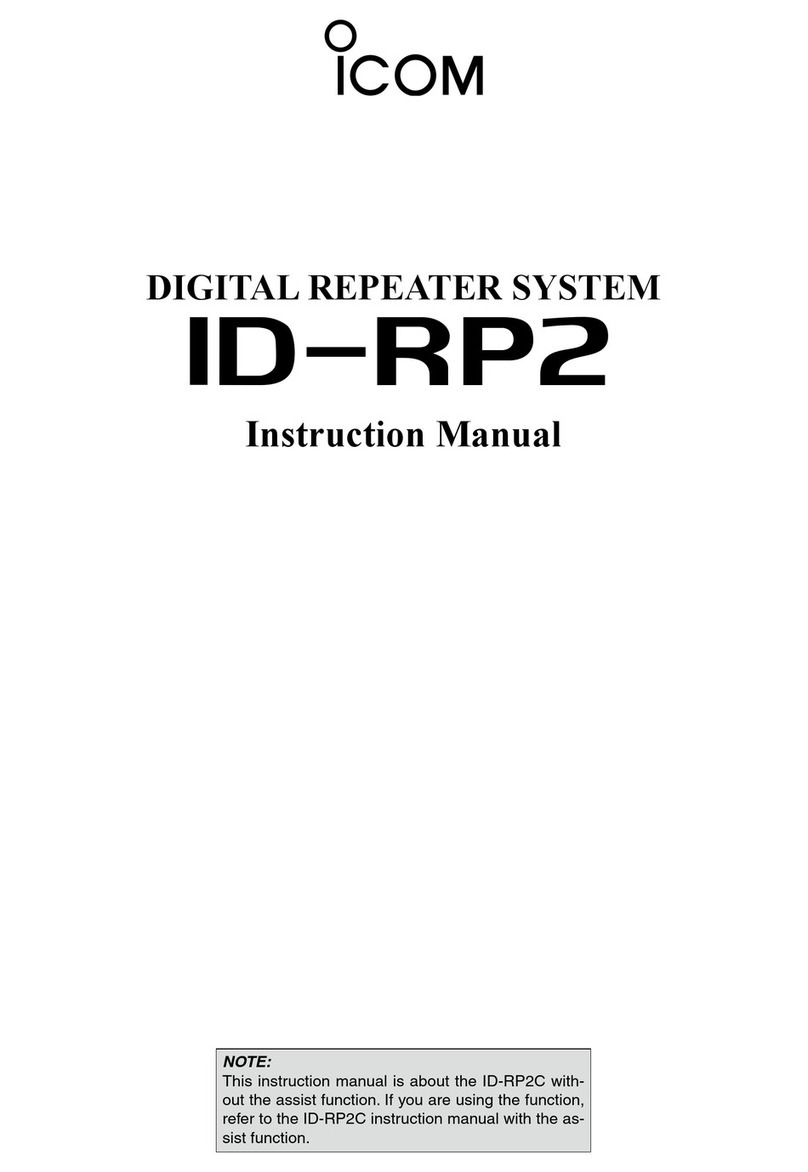
Icom
Icom ID-RP2C User manual
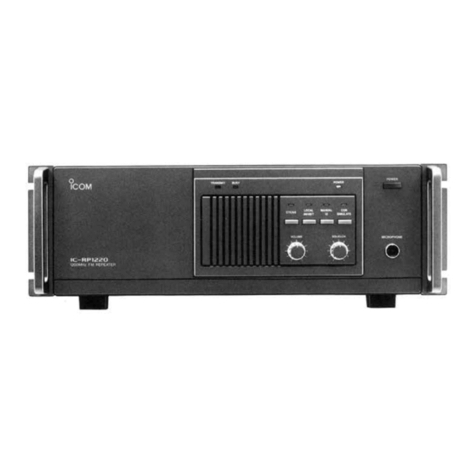
Icom
Icom IC-RP1220 User manual
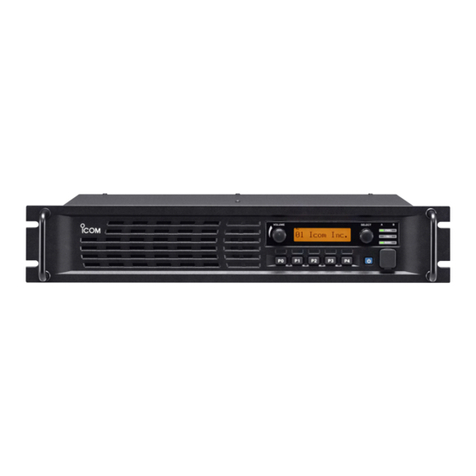
Icom
Icom iC-FR5000 User manual
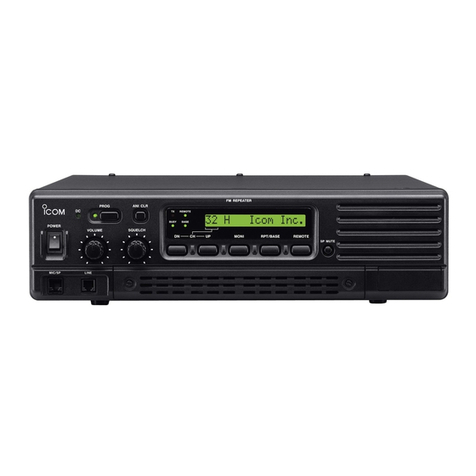
Icom
Icom IC-FR4000 Series User manual

